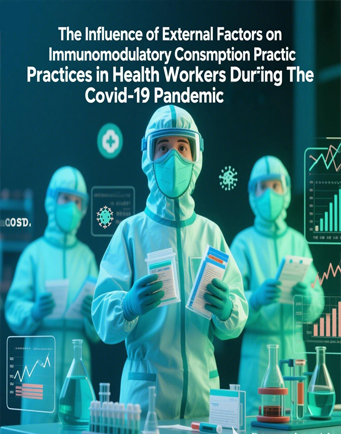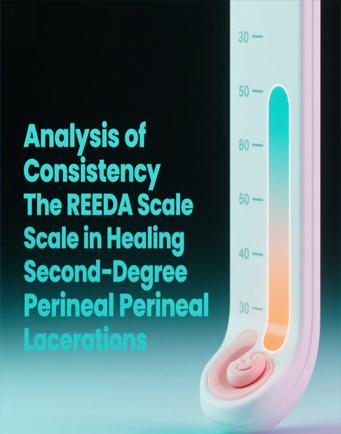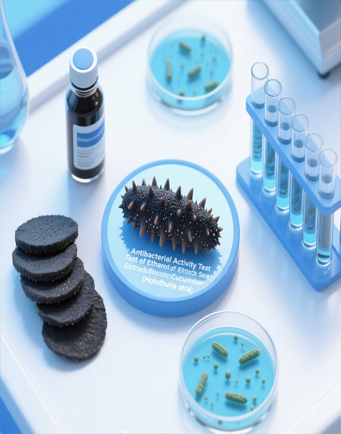Hemodialysis Duration with Levels of Hemoglobin, Hematocrit, Serum Iron and Total Iron Binding Capacity on Chronic Kidney Disease
Downloads
The correlation of the length of time undergoing hemodialysis with the levels of hemoglobin, hematocrit, serum iron and total iron binding capacity in patients with chronic kidney disease at RSUD Prof. Dr. W. Z. Johannes Kupang. People with chronic kidney disease who are performing Hemodialysis suffer from anemia. Blood loss during the hemodialysis process is affected by frequent blood sampling for laboratory tests. To diagnose the occurrence of iron deficiency, anemia laboratory tests such as complete blood, serum iron (SI), TIBC, transferrin saturation, and serum ferritin can be conducted. The objective of this study is to determine the correlation between the length of undergoing Hemodialysis with the levels of Hemoglobin, Hematocrit, Serum Iron, and Total Iron Binding Capacity (TIBC) in patients with chronic kidney disease in RSUD Prof. Dr.W. Z Johannes Kupang. This study employed an anon-reactive research design or unobtrusive research based on secondary data derived from medical record records at RSUD Prof. Dr.W. Johannes in August - September 2019 on 92 hemodialysis patients who met the inclusion criteria. The collected data were calculated with the SPSS application, while the correlation analysis between variables was performed by administering a linear regression analysis test. Ninety-two (92) respondents were obtained by employing the purposive sampling technique. The majority of patients with chronic kidney disease undergoing Hemodialysis were men (57.6%) with ages 39 - 59 years (63.0%), and the majority of patients undergoing Hemodialysis in patients with chronic kidney failure (CKD) were <12 months (41.3%). It was discovered that there was no relationship between the length of Hemodialysis with hemoglobin, hematocrit, serum iron, and total iron-binding capacity levels in patients with chronic kidney disease (CKD).
Agustina, W., & Wardani, E. K. (2019). Penurunan Hemoglobin pada Penyakit Ginjal Kronik Setelah Hemodialisis di RSU “KH” Batu. Jurnal Ners dan Kebidanan (Journal of Ners and Midwifery), 6(2), 141-146.
Aisara, S., Azmi, S., & Yanni, M. (2018). Gambaran klinis penderita penyakit ginjal kronik yang menjalani hemodialisis di RSUP Dr. M. Djamil Padang. Jurnal Kesehatan Andalas, 7(1), 42-50.doi: https://doi.org/10.25077/jka.v7i1.778
Dharmawan, E., Widiana, I. G. R., Suwitra, K., Sudhana, W., Loekman, J. S., Kandarini, Y., & Ayu, N. P. (2018). Faktor-faktor yang berhubungan dengan hipertensi intradialitik pada populasi hemodialisis di rumah sakit sanglah denpasar. MEDICINA, 49(2), 266-270. doi:http://doi.org/10.15562/medicina.v49i2.194
Djami, S. W., Arif, M., & Bahrun, U. (2019). N Terminal–Pro Brain Natriuretic Peptide (Nt-ProBNP) in Patients Hypertension Stage 1 And Stage 2. JURNAL INFO KESEHATAN, 17(1), 64-74. doi:https://doi.org/10.31965/infokes.Vol17.Iss1.232
Fitriani, D., Pratiwi, R. D., Saputra, R., & Haningrum, K. S. (2020). Hubungan Lama Menjalani Terapi Hemodialisis Dengan Kualitas Hidup Pasien Penyakit Ginjal Kronik Di Ruang Hemodialisa Rumah Sakit Dr Sitanala Tangerang. Edu Dharma Journal: Jurnal penelitian dan pengabdian masyarakat, 4(1), 70-78. doi:http://dx.doi.org/10.52031/edj.v4i1.44
Hidayat, R., Azmi, S., & Pertiwi, D. (2016). Hubungan Kejadian Anemia dengan Penyakit Ginjal Kronik pada Pasien yang Dirawat di Bagian Ilmu Penyakit Dalam RSUP dr M Djamil Padang Tahun 2010. Jurnal Kesehatan Andalas, 5(3). doi:https://doi.org/10.25077/jka.v5i3.574
Indri, J.(2020). Asuhan Keperawatan pada Pasien dengan Gagal Ginjal Kronis yang di Rawat Di Rumah Sakit.Karya Tulis Ilmiah. Prodi DiplomaTiga Keperawatan Samarinda, JurusanKeperawatan, PoliteknikKesehatanKementerianKesehatan Kalimantan Timur.
Kementerian Kesehatan Republik Indonesia. (2013). Riset Kesehatan Dasar (RISKESDAS) 2013. Badan Penelitian dan Pengembangan Kesehatan, Kementerian Kesehatan Republik Indonesia.
Kementerian Kesehatan Republik Indonesia. (2018). Cegah dan kendalikan penyakit ginjal dengan cerdik dan patuh. Jakarta: Kementerian Kesehatan Republik Indonesia. Available on:https://sehatnegeriku.kemkes.go.id/baca/umum/20180307/1425164/cegah-dan-kendalikan-penyakit-ginjal-cerdik-dan-patuh/
Kementerian Kesehatan Republik Indonesia. (2018). Laporan Nasional RISKESDAS 2018. Jakarta: Badan Penelitian dan Pengembangan Kesehatan, Kementerian Kesehatan Republik Indonesia.
Kim, Y. L., & Kawanishi, H. (2018). The Essentials of Clinical Dialsis. Singapore: Springer.
Permatasari, L. F., & Maliya, A. (2019). Hubungan Lamanya Menjalani Hemodialisis dengan Status Zat Besi pada Penderita Gagal Ginjal Kronik. Skripsi.Program Studi S1 Keperawatan, FakultasIlmuKesehatan, Universitas Muhammadiyah Surakarta.
Pradipta, P. N., Suwitra, K. & Widiana, R. (2018). Status Nutrisi Pasien Penyakit Ginjal Kronik Yang Menjalani Hemodialisis Reguler Lebih Dari 5 Tahun Di Rumah Sakit Umum Pusat Sanglah Denpasar. Medicina, 49(2), 206-211. doi:http://doi.org/10.15562/medicina.v49i2.228.
Rachmanto, B. (2018). Teknik dan Prosedur Hemodialisa. Surakarta: RSUD Dr.Moewardi.
Rachmiwatie, A., Noormartany, N., Gondodiputro, R. S., & Prihatni, D. (2018). Kadar Hemoglobin Retikulosit Di Anemia Dan Nonanemia Akibat Defisiensi Besi Absolut Di Gagal Ginjal Terminal Terkait Hemodialisis (Reticulocyte Hemoglobin Level of Absolute Iron Deficiency Anemia and NonAbsolute Iron Deficiency Anemia In End State Renal Disease Undergoing Maintenance Hemodialysis). Indonesian Journal Of Clinical Pathology And Medical Laboratory, 21(1), 32-39. doi:http://doi.org/10.24293/ijcpml.v21i1.1256.
Simatupang, D. S. (2019). Gambaran Pengetahuan Pasien Gagal Ginjal Kronik Tentang Kepatuhan Menjalani Hemodialisis Di Ruang Hemodialisa RSUP H. Adam Malik Medan Tahun 2019. Jurnal Ilmiah PANNMED (Pharmacist, Analyst, Nurse, Nutrition, Midwivery, Environment, Dentist), 14(2), 84-94. doi:https://doi.org/10.36911/pannmed.v14i2.609.
Wahyuni, P., Miro, S., & Kurniawan, E. (2018). Hubungan Lama Menjalani Hemodialisis dengan Kualitas Hidup Pasien Penyakit Ginjal Kronik dengan Diabetes Melitus di RSUP Dr. M Djamil Padang. Jurnal Kesehatan Andalas, 7(4), 480-485. doi:https://doi.org/10.25077/jka.v7i4.905.
Winalda, I. (2018). Hubungan Lama Menjalani Hemodialisis Dengan Kualitas Hidup Pasien Ginjal Kronik Di Instalasi Hemodialisis RSUP Dr. Mohammad Hoesin Palembang. Skripsi. Palembang: Universitas Sriwijaya.
World Health Organization. (2003). Global burden of disease study. World Health Organization.
Yusman, F. A., Dewi, R. T. K., Mashuri, Y. A., Nurhayatun, E., & Giani, M. T. (2020). Faktor yang Berkaitan dengan Kejadian Asites pada Pasien Penyakit Ginjal Kronik yang Menjalani Hemodialisis di RSUD Dr Moewardi Surakarta: Sebuah Studi Potong Lintang. Jurnal Penyakit Dalam Indonesia, 7(3), 154-160.doi:http://dx.doi.org/10.7454/jpdi.v7i3.420
Copyright (c) 2021 JURNAL INFO KESEHATAN

This work is licensed under a Creative Commons Attribution-NonCommercial-ShareAlike 4.0 International License.
Copyright notice
Ownership of copyright
The copyright in this website and the material on this website (including without limitation the text, computer code, artwork, photographs, images, music, audio material, video material and audio-visual material on this website) is owned by JURNAL INFO KESEHATAN and its licensors.
Copyright license
JURNAL INFO KESEHATAN grants to you a worldwide non-exclusive royalty-free revocable license to:
- view this website and the material on this website on a computer or mobile device via a web browser;
- copy and store this website and the material on this website in your web browser cache memory; and
- print pages from this website for your use.
- All articles published by JURNAL INFO KESEHATAN are licensed under the Creative Commons Attribution 4.0 International License. This permits anyone to copy, redistribute, remix, transmit and adapt the work provided the original work and source is appropriately cited.
JURNAL INFO KESEHATAN does not grant you any other rights in relation to this website or the material on this website. In other words, all other rights are reserved.
For the avoidance of doubt, you must not adapt, edit, change, transform, publish, republish, distribute, redistribute, broadcast, rebroadcast or show or play in public this website or the material on this website (in any form or media) without appropriately and conspicuously citing the original work and source or JURNAL INFO KESEHATAN prior written permission.
Permissions
You may request permission to use the copyright materials on this website by writing to jurnalinfokesehatan@gmail.com.
Enforcement of copyright
JURNAL INFO KESEHATAN takes the protection of its copyright very seriously.
If JURNAL INFO KESEHATAN discovers that you have used its copyright materials in contravention of the license above, JURNAL INFO KESEHATAN may bring legal proceedings against you seeking monetary damages and an injunction to stop you using those materials. You could also be ordered to pay legal costs.
If you become aware of any use of JURNAL INFO KESEHATAN copyright materials that contravenes or may contravene the license above, please report this by email to jurnalinfokesehatan@gmail.com
Infringing material
If you become aware of any material on the website that you believe infringes your or any other person's copyright, please report this by email to jurnalinfokesehatan@gmail.com.





































